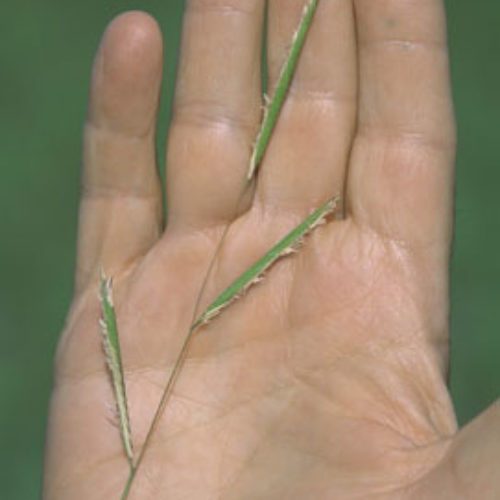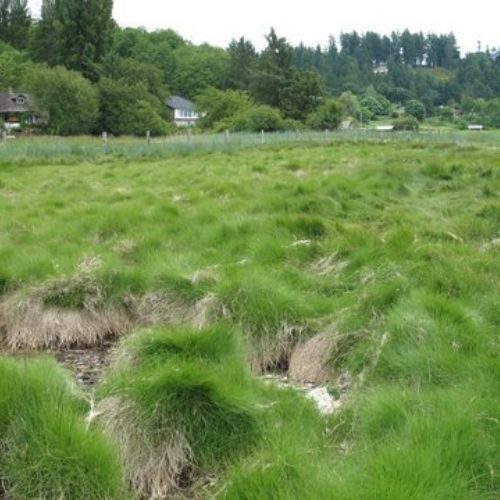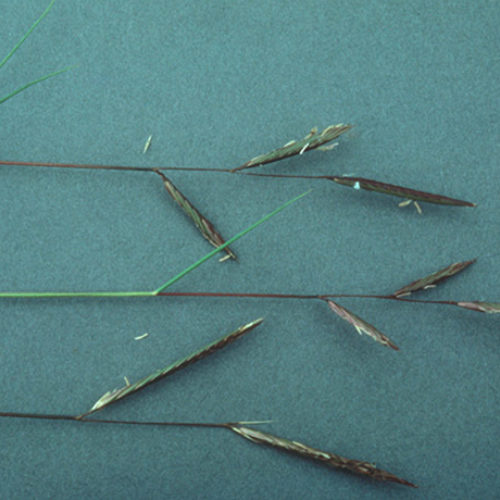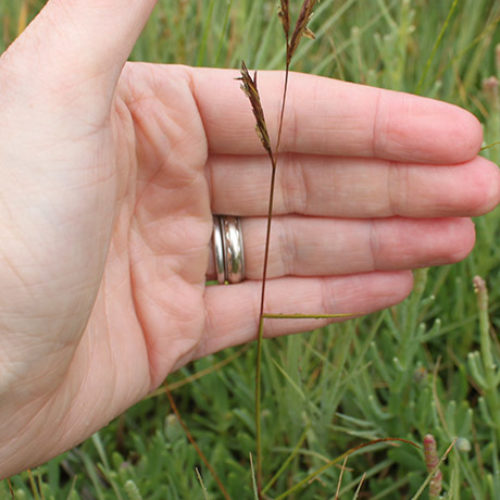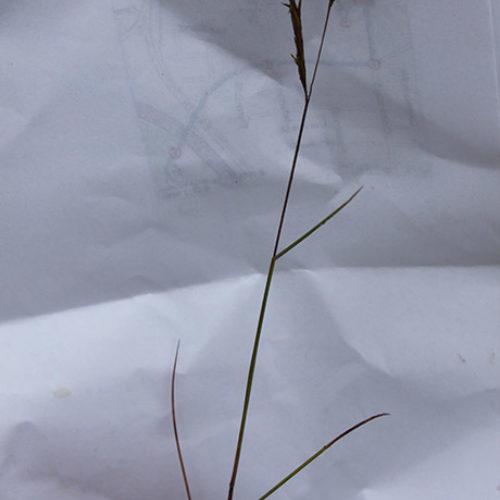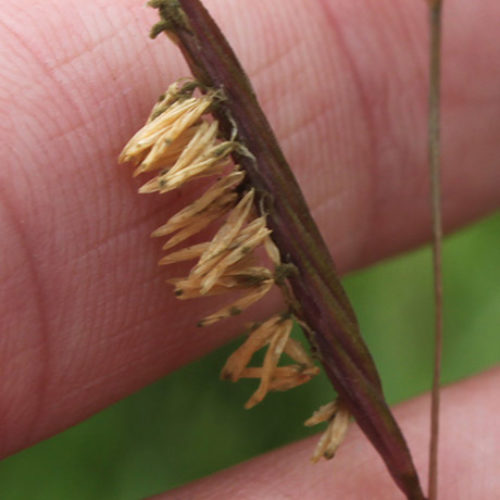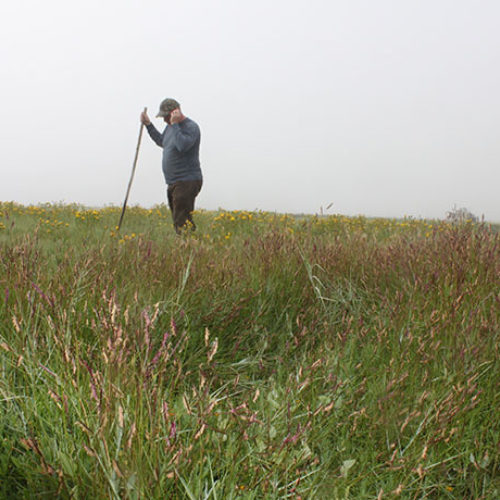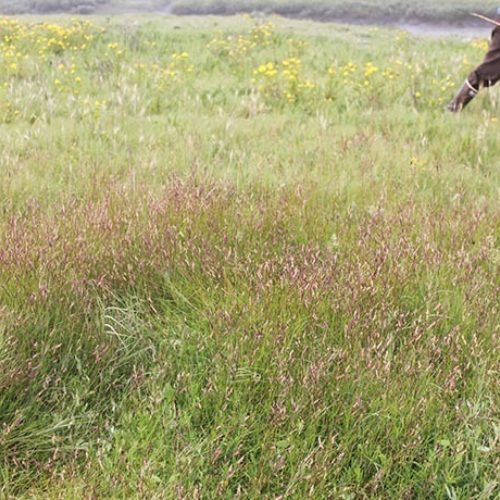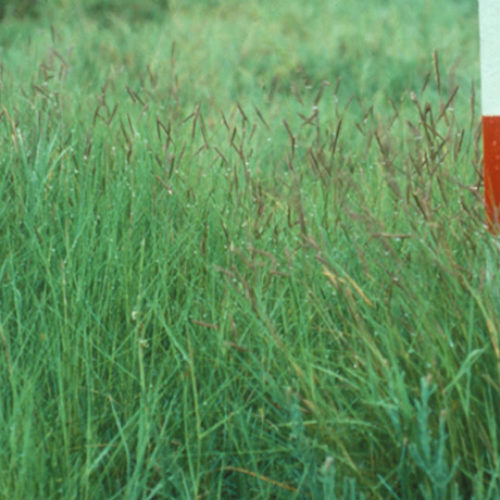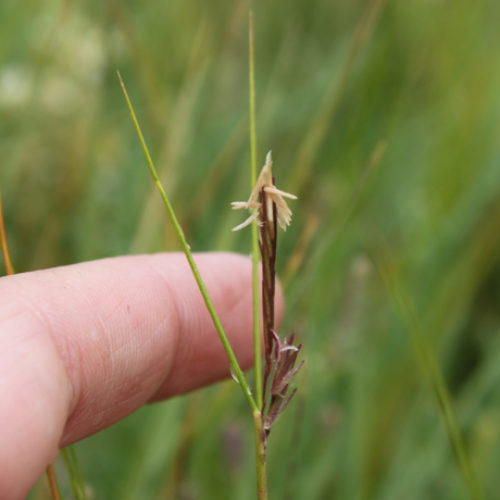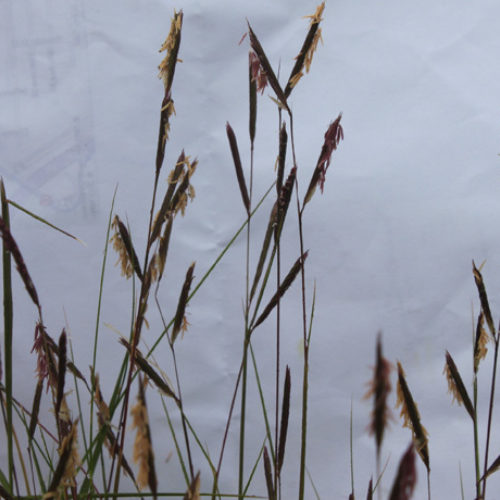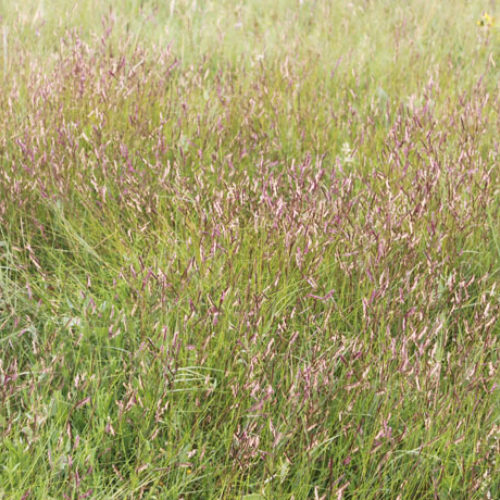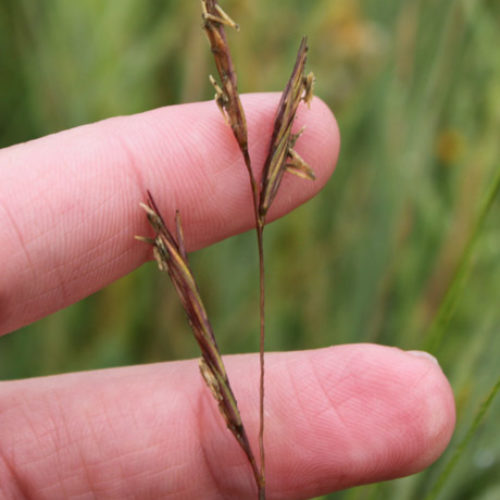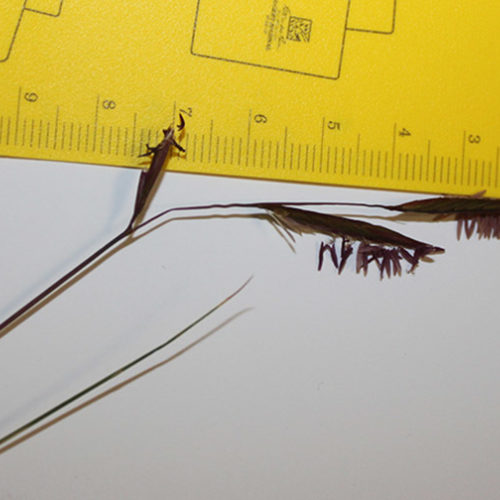Salt Meadow Cordgrass
Spartina patens
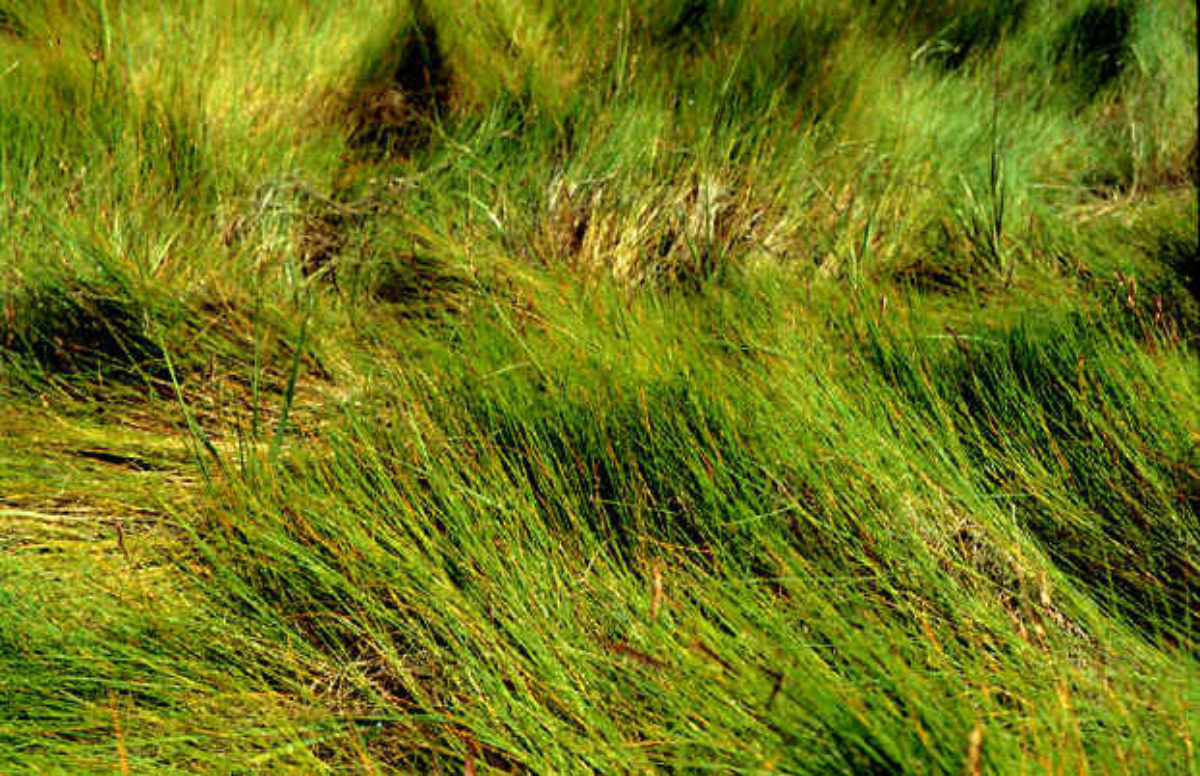
Family: Poaceae
Weed class: A
Year Listed: 1990
Native to: The Atlantic coast from Canada to the Caribbean and Central America.
Is this Weed Toxic?:
not known to be
Legal listings:
WAC 16-752; WSDA Quarantine list (prohibited plant list)
Why Is It a Noxious Weed?
In general, the Spartina genus is considered highly invasive and one of the most aggressive worldwide. Spartina displaces native species, destroys wildlife habitat, interferes with recreational activities and is difficult and expensive to control.
How would I identify it?
General Description
Salt meadow cordgrass is an upright, rhizomatous grass, 1 to 4 feet tall. The plant forms dense stands.
Flower Description
Flowers occur in two to several spikes that are pressed together to somewhat spreading.
Leaf description
The leaves are hairless, blades are 3.9-19.7 inches (10-50 cm) long, by 0.002-0.16 (0.28) inches (0.5-4(7) mm) wide. When young the leaf blades are in-rolled and have ridges. The ligules consist of a fringe of hairs, 0.02 inches long.
Stem description
Stems are slender, solitary or in small clumps with firm internodes.
Where does it grow?
As its common name implies, it dominates the upper salt marsh. It also will colonize on sand dunes, swale grasslands, sand flats and coastal scrublands. Please click here to see a county level distribution map of salt meadow cordgrass in Washington.
How Does it Reproduce?
Salt meadow cordgrass reproduces mainly by its rhizomes, although it does produce viable seed.
How Do I Control It?
General Control Strategy
.
Mechanical Control
Seedlings can be pulled out effectively though care should be taken to remove both shoots and roots. Covering small clones with woven geotextile fabric has been successful on Spartina patens. Mowing infestations can contain growth, limit seed set and eventually kill the plants. To be effective, clones must be mowed repeatedly, beginning with initial spring green-up and continued until fall die-back. In some cases, repeated mowing will be required for three or four years.
Cultural Control
Diking can be used as a containment measure, since dikes confine the lateral spread of rhizomes. Diking blocks tidal flow, which stops nutrient flow and oxygen exchange. Prolonged flooding may eventually kill Spartina and other species that cannot tolerate standing water.
Biological Control
Several insects feed on Spartina patens in its native range. Currently, the distribution of S. patens in Washington is too small to require the use of classical biological control.
Herbicide Control
Please refer to the PNW Weed Management Handbook, or contact your county noxious weed coordinator.
For More Information
WSDA's Spartina Eradication Program
See our Written Findings for more information about salt meadow cordgrass (Spartina patens).
Whatcom County NWCB Fact Sheet on Spartina spp.
Saltmeadow Cordgrass, PNW Extension Publication



